The Tour des Stations takes place every summer. It’s one of the most exciting cycling events in Switzerland.
Held over six days in August, entrants can choose between six routes which vary from challenging to extremely challenging! What they all have in common is the incredible scenery. 2023 sees three new routes added to the Tour des Stations’ menu of routes; two of these will only have space for 100 entrants each, so you’ll need to get in quick if you want to grab your spot.
This article aims to help you decide whether this gran fondo in Switzerland is for you.
To that end, we spoke to the event organiser, Grégory Saudan, President of the Tours des Stations event. For the full lowdown on what each course involves and what to expect, keep reading!
This guide provides an overview of the event that is due to take place between 1 and 6 August 2023. Please read the rules, entry conditions and information on the official website if you want to take part. In the event of any discrepancy between this guide and information on the official website, please rely on the official website.
Overview of Tour des Stations
The Tour des Stations takes place between 1st and 6th August 2023 in Switzerland.
It’s one for the mountain goats – the event involves some pretty serious climbing (and descending). Perhaps not a huge surprise when you think about where it’s being held! The Swiss mountains also ensure the scenery is magnificent.
Entrants can choose between six routes. These vary in length:
- 74 kilometres (with 2,900m elevation gain)
- 133 (with 4,700m elevation gain)
- 185 (with 6,800m elevation gain)
- 242 (with 8,848m elevation gain)
- 555 kilometres (with 17,000m elevation gain)
- 1,000 kilometres (with 26,000m elevation gain)
So all the routes involve significant climbing. This makes Tour des Stations ideal for those who relish a challenge – from fit but less experienced cyclists to those seeking one of the most arduous routes on the planet!
Why did you create the Tour des Stations event?
Switzerland is home to many cyclosportives, but before Tours des Stations, there weren’t many international mass start cycling events showcasing our picturesque landscapes, meticulously maintained roads and exceptional mountain ranges.
The Tour des Stations aimed to change all that.
The first edition of the Tour des Stations was held in 2018. We have always aimed to offer an exceptional sporting challenge to all cycling enthusiasts.
Our ambition is for Tour des Stations to be the most popular cycling event in Switzerland. The Swiss equivalent of the Marmotte in France, or the Marathon des Dolomites in Italy, if you like.
In 2022, we were delighted to welcome 2,750 cyclists – and in 2023, we hope to fill all our 3,500 places.
What makes Tour des Stations special?
The Tour des Stations is an endurance cycling race that takes place in the heart of the Valaisan Alps in Switzerland. This is a fantastic destination for passionate cyclists. The Tour des Stations links exceptional Swiss resorts, breathtaking backdrops and an extraordinary “altitude difference per kilometres” ratio.
As such, we think Tour des Stations has quickly become a classic in the cyclosportive calendar – both in Switzerland and in Europe.
The event stands out by offering a unique challenge: the Ultrafondo lets you measure yourself against the height difference of Everest in a single day.
However, all entrants have the choice of climbing “their own summit” from among the six routes on offer.
Regardless of the duration of the challenge and the length of the route chosen, the Tour des Stations promises thrills throughout – plus perhaps tears of joy once you finally cross the finish line!
Who is the event for?
We offer one day event routes ranging from 74 kilometres (2,850m elevation gain) to 242 kilometres (8,848m elevation gain) and an Ultimate format available in two options – 555 kilometres or 1,000 kilometres.
As such, the Tour des Stations is aimed at amateur cyclists looking for a first major challenge on a road bike. But we also attract the most experienced athletes, including adventurers who wish to discover the world of ultra-cycling.
What can riders see en route?
All routes start in Le Châble. We’ve designed our routes to make sure riders get an amazing sense of the Valais region, with its rolling vineyards, famous Swiss peaks, Alpine pastures, authentic villages and internationally renowned resorts.
The end point is the summit of the Croix-de-Coeur pass (which is on the programme for the 13th stage of the Giro 2023).
What are the roads like?
The event takes place on roads that are open to traffic. However, each year we implement measures to help ensure rider safety.
These include signposting, motorbike outriders, volunteers stationed at all roundabouts, flags indicating dangerous areas and signs that indicate sections requiring particular attention. The most perilous points of the route are summarised here.
What support can cyclists expect?
Our team of volunteers on the course and at the refreshment tents on the route provide excellent support through the event.
The Welcome and Finishers villages in Le Châble and Verbier also provide an unforgettable atmosphere and warm welcome for participants – plus anyone who accompanies them.
There’s more on this below.
Explain the profile of each Tour des Stations route
The different Tour des Stations routes are summarised below:
Mediofondo
- 74 kilometres
- 2,900 metres elevation gain
- Begins: Le Châble
- Ends: Croix de Cœur pass
- Entrants: up to 1,000
- Time record (year): 02:48:47 (2022)
- Date and time: Saturday 5th August 2023 at 8 to 8.30 am
With its “short” but explosive profile, the Mediofondo is the perfect compromise for many. Whether it’s seen as a first major road bike challenge, an achievable goal for a more difficult season or a way to get the hang of things and set a time, the Mediofondo is in many ways the perfect course.
In addition, it offers the main “signature” sectors of the Tour des Stations, including the now legendary gravel passages of the Col du Lein and the Forêt Verte, before finishing in style atop the fabulous Col de la Croix-de-Cœur.
Granfondo
- 133 kilometres
- 4,700 metres elevation gain
- Begins: Le Châble
- Ends: Croix de Cœur pass
- Entrants: up to 1,000
- Time record (year): 04:53:03 (2022)
- Date and time: Saturday 5th August 2023 at 6 to 7 am
The Marmotte Granfondo course is the ideal opportunity to test yourself on a stage worthy of a Grand Tour. After the serpentine Col du Lein, there are about twenty kilometres of flat ground to cover before leaving the plains for good.
The route then follows the climbs and iconic sectors of the Tour des Stations: the Mur d’Hérémence, the Alpine road of Thyon 2000 and the menacing Forêt Verte before finally reaching the summit at the Croix-de-Cœur pass.
Ultrafondo
- 242 kilometres
- 8,848 elevation gain
- Begins: Le Châble
- Ends: Croix de Cœur pass
- Entrants: up to 750
- Time record (year): 09:27:04 (2021)
- Date and time: Saturday 5th August 2023 at 2.30 or 5 am
A large part of the Tour des Stations’ reputation is thanks to its Ultrafondo course. This offers cyclists the chance to take on a ride the height difference of Mount Everest. This is covered in one day over 242 kilometres, with an average gradient of 3.7%. It takes cyclists up and down, all day long, through the most beautiful Valaisan resorts and passes.
We think this is the best way to take on an Everest challenge. We also have the option of the team gran fondo.
Superfondo
- 185 kilometres
- 6,800 metres elevation gain
- Begins: Le Châble
- Ends: Croix de Cœur pass
- Entrants: up to 750
- Time record (year): New route for 2023
- Date and time: Saturday 5th August 2023 at 5.30 am
This event is new for 2023. It’s aimed at those who have already participated in numerous gran fondos. It has been specially designed for sportsmen and women who want to get a little closer to Ultrafondo level.
First of all, the daunting prospect of the “Col du Lein – Ovronnaz – Mayens-de-la-Zour” section awaits, before tackling the classic Marmotte Granfondo course from Bramois.
Ultimate 555
- 555 kilometres
- 17,000 metres elevation gain
- Begins: Le Châble
- Ends: Croix de Cœur pass
- Entrants: up to 100
- Time record (year): New route for 2023
- Date and time: Thursday 3rd August 2023 at 8pm
This challenge is new for 2023. With its exclusively Valaisan route, the Ultimate 555 kilometre course (17,000 D+) is made for cyclists who want to discover this magnificent region.
Throughout the distance, solo and duo participants can discover the most beautiful routes of the region between the Bas-Valais and the Haut-Valais. Almost half of these are included on the legendary Ultrafondo the Everest route. Overall the route links nearly 20 Valais destinations and has to be completed within a maximum of 70 hours.
Ultimate 1000
- 1,000 kilometres
- 26,000 metres elevation gain
- Begins: Le Châble
- Ends: Croix de Cœur pass
- Entrants: up to 100
- Time record (year): New route for 2023
- Date and time: Tuesday 1st August 2023 at 3pm
This challenge is also new for 2023. With its 26,000D+ spread over 1,000 kilometres, the Ultimate 1000 is certainly one of the hardest courses in the world. It lasts for several days (there’s a maximum time limit of 120 hours to complete it) and is semi-autonomous. This ultimate Tour des Stations route offers only the most trained riders the chance to cross the Swiss Alps – linking 35 tourist destinations through seven alpine cantons as they go.
Throughout the 1,000 kilometres, riders will pass lakes, mountains, world-famous resorts, traditional villages, remote forest roads and high Swiss passes, such as the Susten and the cobbled climb of the Tremola.
What are the highlights?
Experience the Valais
With courses ranging from the Mediofondo to the Ultimate 1000, the Tour des Stations offers a spectacular ride for cyclists with different levels of experience. We think the challenge of Everest paired with linking attractive central Valais resorts has helped to place the Tour des Stations on the international stage.
Atmosphere
Tour des Stations always has a great atmosphere and reaching the ski stations like Nendaz, la Tzoumaz is often a highlight for riders as supporters gather at the roadside.
We are often told by participants that the Thyon 2000 refreshment post is particularly appreciated. The volunteers provide a great atmosphere and the participants know that the finish line is approaching.
This year we have heard that the inhabitants of Vercorin have already decided to meet at 11am with a musical atmosphere as well as a bar and a canteen!
Ultra-distances
We’re also really excited by the introduction of our three new events this year. In particular, the Ultimates are a novel new offering. We are keen to be seen as the Everest of international cycling. The longer term aim is to promote the Valais and Verbier as a global meeting place for ultra-cycling, following the example of Chamonix and the ultra trail.
What training do you suggest to complete Tour des Stations?
The Tour des Stations is aimed at a broad audience. As a participant, you can choose to set your first major test on a road bike, or to try to achieve a challenging time goal.
Are you up to the challenge?
All of our courses offer a challenge and it’s important to ensure you’re ready. Of course the longer distances require more experience and fitness than the shorter ones.
As far as the Ultimates are concerned, this new format is aimed at “confirmed ultra-cyclists”, as well as those who are curious to discover the discipline. Reboost Stations present along the route can help the less experienced (more on those below).
Planning and preparation tips
The demands of the distance and altitude difference require careful planning and physical preparation. A lot of training and hours spent in the saddle are necessary to complete this Alpine odyssey.
I’d also recommend testing yourself in event conditions before the day itself. For example make sure you ride at night, ride loaded, or ride several days in a row. In short, just keep on riding.
For this part of preparation, check out our series of video clips on the R&D Events YouTube channel.
Are there time cut offs?
There are time cut-offs that cyclists have to meet when taking part in Tours des Stations. These have been designed to allow everyone to reach the finish line on time, without compromising their own safety.
Nevertheless, if you don’t meet the time cut off, you can sign a waiver and continue the race at your own risk. In this situation, you will still be timed, but not classified.
- It’s worth knowing that if you do need to retire, participants have free access to public transport via their race number.
Mediofondo, granfondo, ultrafondo
The time limit for the Ultrafondo is 8.30 pm on Saturday for the finish at the Col de la Croix-de-Cœur. The cut-offs for other events can be found in the event roadbook.
Ultimates
As well as various intermediate time cuts, there are overall time requirements. For the Ultimate 555, the finish at the Croix-de-Coeur must be reached in a maximum of 70 hours. The time limit for the Ultimate 1000 is 120 hours.
Any competitor who does not reach the intermediate checkpoints and the finish before the time limits, and who wishes to continue independently, will only be able to do so after informing the race headquarters and signing a waiver. As mentioned, doing so means taking total responsibility for your own actions.
How to plan your nutrition
It’s sensible to have a planned nutrition strategy when completing these courses.
Given these are all long-distance events with a minimum of 2 hours riding (and many routes much, much longer), it is advisable to plan your own regular carbohydrate intake. However, varying the nutritional intake and staying well hydrated is also essential.
Participants can find a proposed nutritional strategy offered by our partner ENERVIT in the road book attached to their registration.
Refreshment stations
On the fondo courses, there are more than ten refreshment stations. These are stocked with a wide range of food and drinks, including various ENERVIT products such as bars, gels and isotonic drinks. Local products such as dried meat, fruit, biscuits are also available, plus of course water and sweet drinks.
Reboost stations
For the Ultimates, Reboost Stations also allow participants to find a safe place to sleep, shower, eat and collect their personal belongings. There are eight on the Ultimate 1000 and three on the Ultimate 555. Other than at the Reboost Stations, cyclists have to arrange rest and food themselves. There is more information on the Reboost Stations, including the bag drop off facility, below.
What kit choices do you recommend?
Given the diversity of the courses offered, there is no one-size-fits-all answer to this question.
Fondos
For the classic fondo courses, we ask participants to bring a rigid helmet with a chin strap attached, a mobile phone with a fully charged battery, a frame plate, a road book with the emergency number, a hydration system (water bottle or hydration bag) as well as lighting. A white headlight and a red rear headlight for all participants is needed.
Ultimates
The route covers paths with gravel sections as well as roads. We recommend using classic road bikes with a tyre width of 28mm or more. Below that (25mm or 23mm), the risk of punctures is increased. Comfort is also greatly affected. Due to the significant difference in altitude, a 50×34 ratio, 11-34 derailleur or equivalent is suitable.
For the Ultimates, the list of compulsory equipment is available on our website and will be checked at the bib check-in. Tour des Stations will provide a reflective pack (chasuble and bike stickers) and a GPS tracker.
We also recommend specific equipment for the night (mattress – sleeping bag, bivy) as well as warm clothes and waterproof clothing. Gloves are not mandatory, but are highly recommended.
Weather
In the event of inclement weather forecasts (heavy rain and/or cool temperatures), the organisation reserves the right to require participants to carry a jacket and survival blanket.
Rules
To find full information, read the event rules and regulations here.
What support is there on the route?
Mechanical assistance
Mechanical assistance is available for the one-day races. This is supplied in Riddes, Conthey, Mayens de la Zour, Anzère, Crans-Montana, Vercorin, Saint-Martin, Thyon 2000, Nendaz and la Tzoumaz. Eight cars will be on the course offering light repairs (the kind that require a minimum of equipment).
Bags and assistance at the Reboost Stations
For the Ultimates, the Reboost Stations provide a safe place to sleep (think camp beds and yoga mats), shower and eat. Friends and family can also come to the Reboost Stations to offer support and comfort to their riders.
At the time of race number collection, participants can leave bags for the Reboost Stations. This presents the ideal opportunity to strategically place necessary items at different points throughout the route.
For the Ultimate 1000, eight Reboost Stations are dotted along the course, so you can drop off eight bags.
For the Ultimate 555, there are three Reboost Stations and thus you can drop off three bags.
The bags can be picked up after the race, in Le Châble on Sunday 6th August.
The Reboost Stations are the only places where the participants’ entourage can offer assistance. Outside of these specified locations, any assistance whatsoever is forbidden. This means things like support vehicles, refreshments and meetings outside a Reboost Station are not allowed.
Medical assistance
Ambulances and medical services will of course be on the courses and available to help if needed.
Getting home (other than on your bike)
Repatriation points are scattered along the different routes; these are the best places to head to if you need a lift home, as they have the best access to pubic transport.
Any participant who has fallen, suffered mechanical damage or physical problems and who cannot reach a repatriation point will be assisted by the end of the race transport (broom wagon).
Where should people stay?
Verbier, Le Châble or the villages of the Val de Bagnes area are ideal for cyclists and their supporters who wish to make the most of the region before and after the race.
You can take a look at the range of apartments available on our RentAlps platform (a free Verbier VIP Pass ski lift access pass is included with each night booked) or browse all the accommodation options in the Verbier area.
How should cyclists get to the event?
Valais is located in the heart of Europe. It’s only three hours by car or train from Lyon, Milan and Zurich, and there are fast connections to Geneva, Milan and Zurich airports.
If you come by car there are several options. You could park in Verbier and cycle to the start in Le Châble (it’s only eight kilometres downhill) or go via gondola (this is free with your race number). Alternatively, you could park in Le Châble, then after the race return to your car by bike or by gondola.
What tips would you give to someone wanting to do this event?
Plan your efforts
As you’ll appreciate, it is important to manage your efforts carefully. It’s very important not to start the race too quickly, so you can then cope with the significant difference in altitude and the gruelling distances and climbing.
Nutrition
Your nutrition strategy is also crucial. It is essential to test the bars, gels and other powders that you intend to use during the race beforehand. Our nutrition partner ENERVIT offers a guide, and their products are available in many cycle shops.
Bike condition
It may seem obvious, but do make sure your bike is in good condition before you arrive. Our partner Ciclissimo offers a mechanical service in the start village, but due to availability it’s wise to service your bike in advance.
Gravel sections such as the summit of the Col du Lein can increase the risk of a puncture. To combat this, bring a kit that you can repair your bike with (i.e. multi-tools, inner tubes, tyre removers and CO2 pumps/caps). Some basic know-how can also be useful and save you time.
If required, the Welcome Village technical support team will be happy to give you tips during the days leading up to the race.
What is there to do before/after the event?
Food and drink
The Valais is one of the best parts of Switzerland for foodies. Local products to try include dried meats, raclette and seasonal fruits. These are ideal for reviving tired cyclists who’ve just completed one of the challenging courses.
Crystal clear lakes
To assist with recovery, there is nothing better than diving into a fresh, clear mountain lake. The peaceful atmosphere at these magnificent spots makes them very popular with hikers.
Further cycling
Finally, for those who prefer a more active form of recuperation, the Valais is criss-crossed with a wide network of cycle paths. Exploring these can be a real pleasure for those who wish to discover further aspects of the canton. Both sporty and leisure cyclists can find a range of cycling routes for their convenience at the www.valais.ch website.
How do you enter?
Registration is easy. Simply visit our website www.tourdesstations.ch.
A licence and/or a medical certificate is not compulsory to participate in cyclosportive events in Switzerland. However, we do strongly recommend that participants consult a doctor to confirm their ability to take part.
Online registration
Until 30th July 2023, registration for the event can only be made via the online registration platform. On-site registration is only possible for the Bambino Fondo Coop.
The fee structure is available on the event website, and also at the online registration platform www.mso-chrono.ch. The next fee change is scheduled for 31st May 2023 (or up to 2,000 registrants).
What’s included?
The registration charge includes a welcome pack, an Enervit water bottle, a l’Échappée beer and other gifts from our partners. Participants also get a PDF version of the road book and a GPX of the course, plus a frame plate, a race number, live-tracking for your friends and family, (for those that finish) a medal and a finisher’s meal.
Choice of route
Each participant can choose the route that suits them best. This choice must be made when registering.
Participants choosing the Ultra Flex option have between the date of registration and 4th August 2023 to postpone until 2024, change the number holder, or even change the route. For Ultra Flex holders, this is free of charge, though the difference in price for the new route chosen is payable when this price is higher.
Other options are also available on our website, offering maximum flexibility.
We hope to see you at Tour des Stations 2023!
A big thank you to Alex for his insights into the Tour des Stations event. It sounds fantastic! Let us know if you’ve done it, or if you have any questions, in the comments below!
Looking for more Switzerland cycling inspiration?
You might like these articles…
Got a question for Grégory?
Fill out this form and we will send it to Grégory. We aim to get you an answer within 24 hours wherever possible!
The contents of this website are provided for general information purposes only. It is not intended to amount to advice and you should not rely on it. You should carry out your own due diligence and risk assessments and take professional advice. Views expressed by interviewees or other users of this website do not necessarily represent our views. We make no representations, warranties or guarantees, whether express or implied, that the content on our website is accurate, complete or up to date. If you use any information or content on this website, download from, or otherwise obtain content or services through our website, it is entirely at your own discretion and risk. Epic Road Rides Ltd disclaims all liability and responsibility arising from any reliance placed on the information and content on this website. Find out more here.




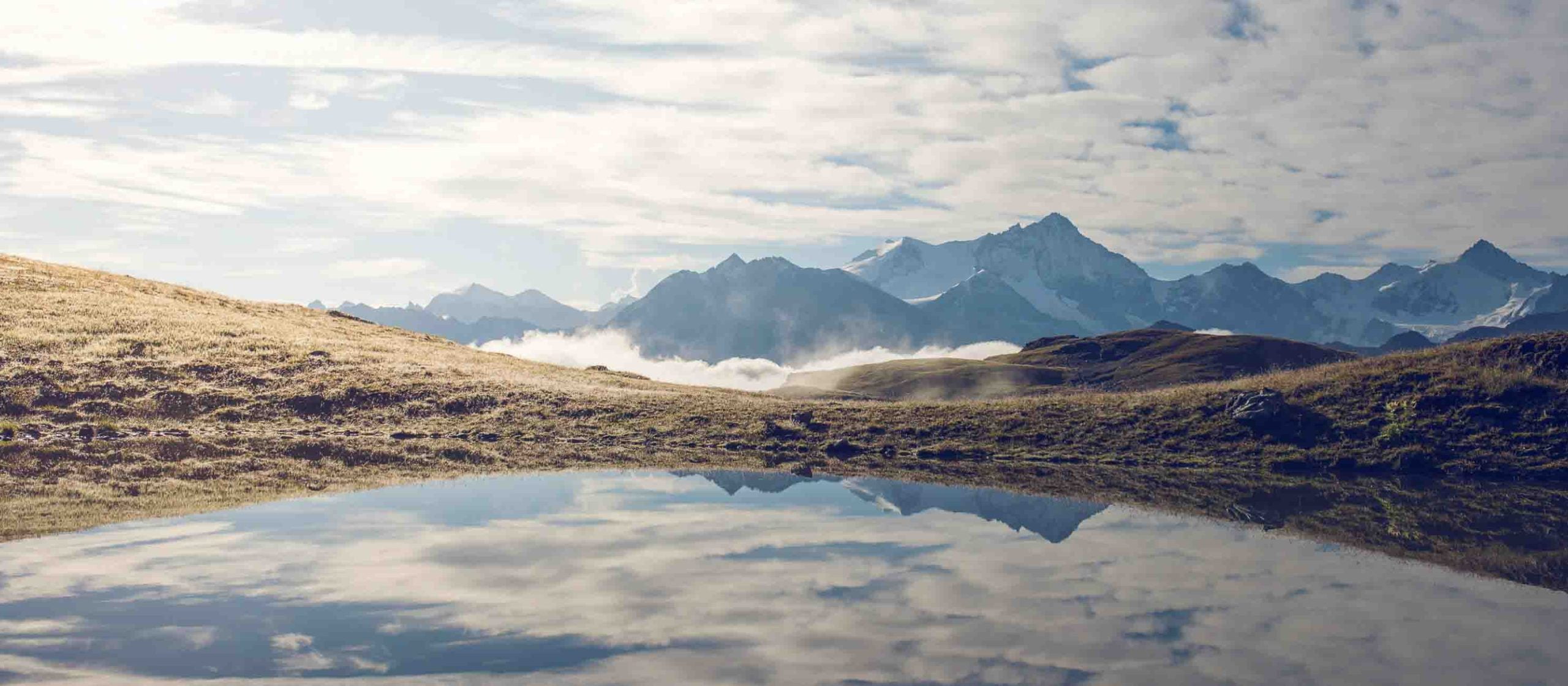

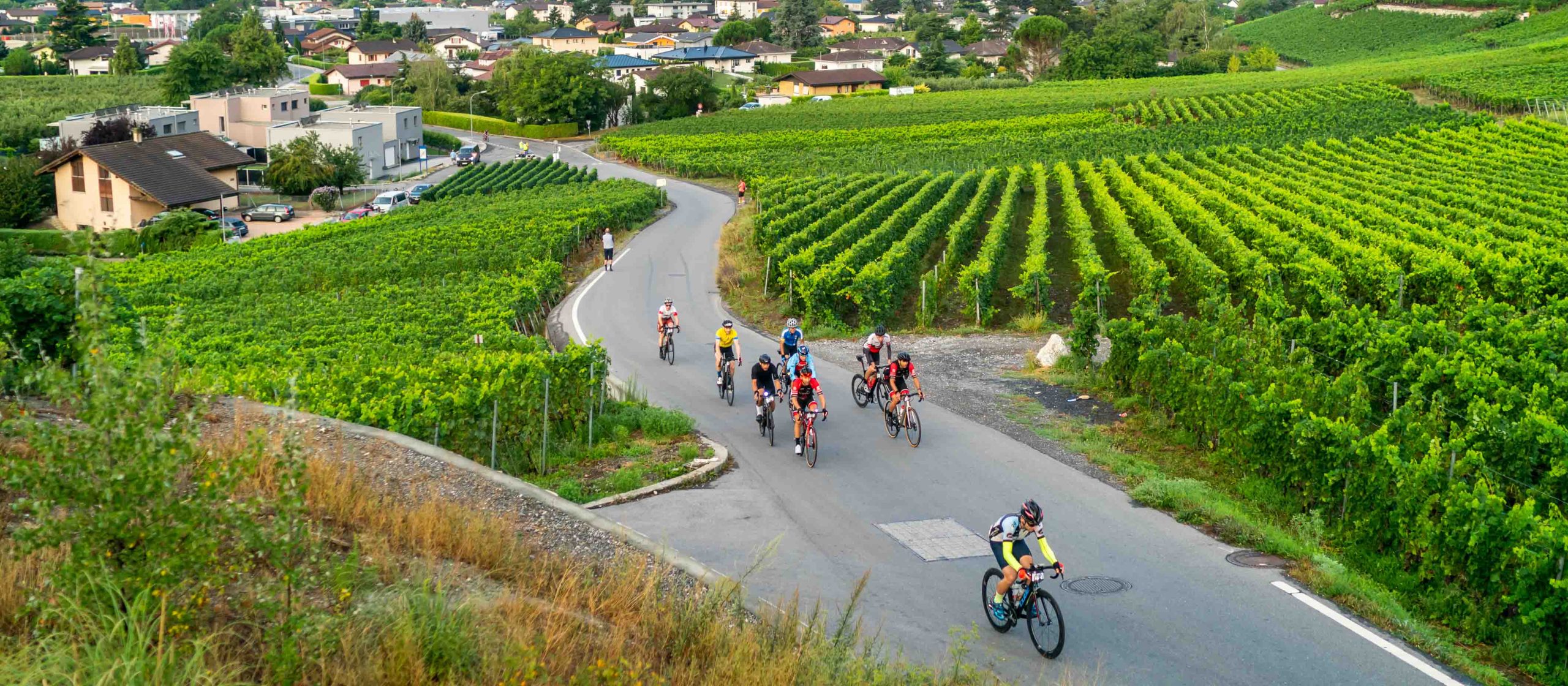



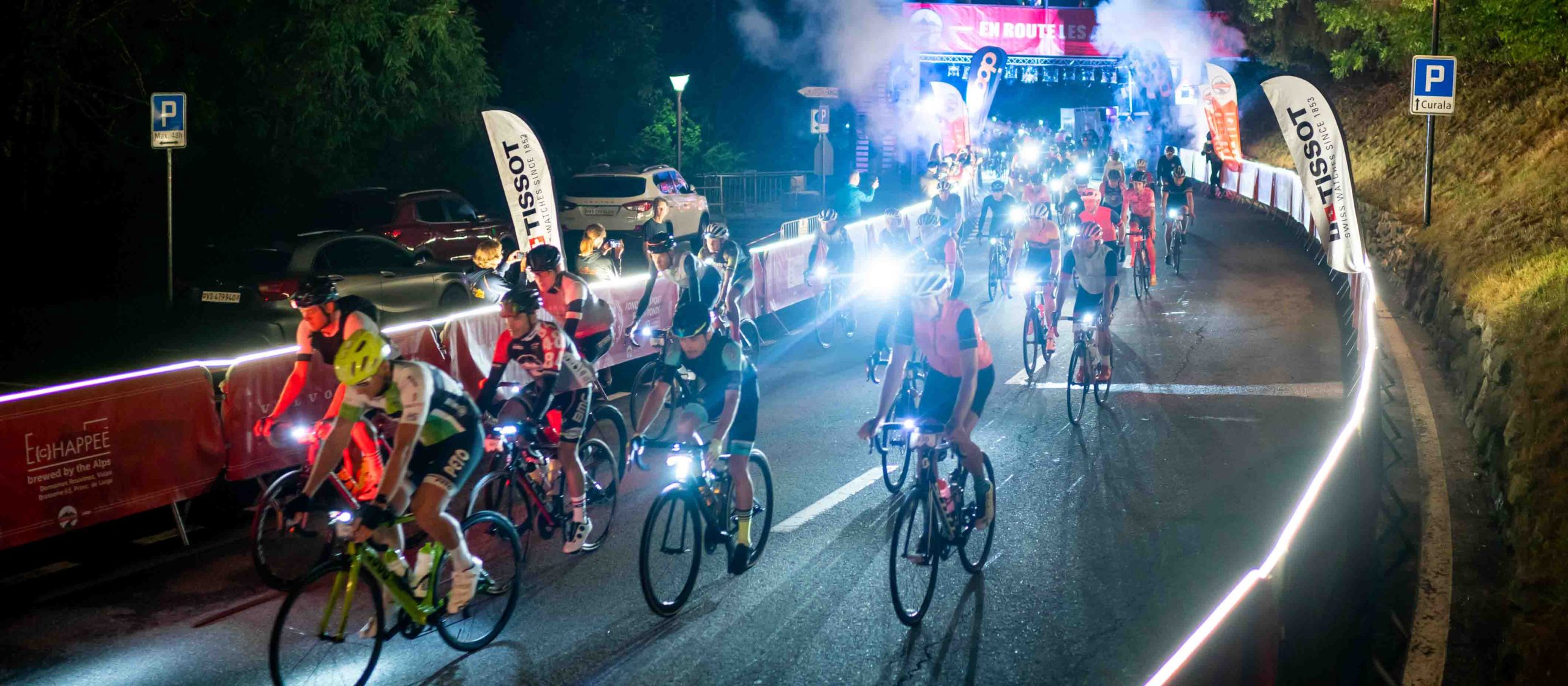
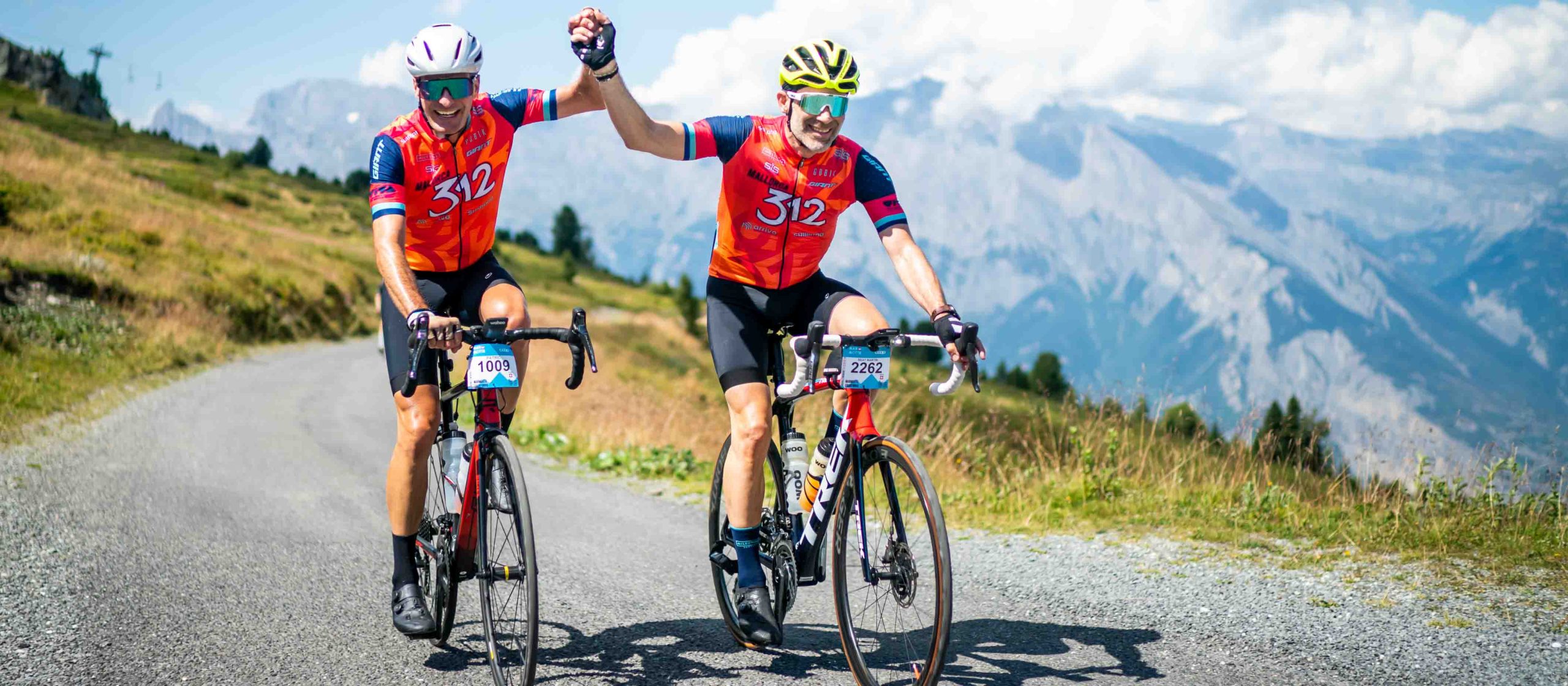

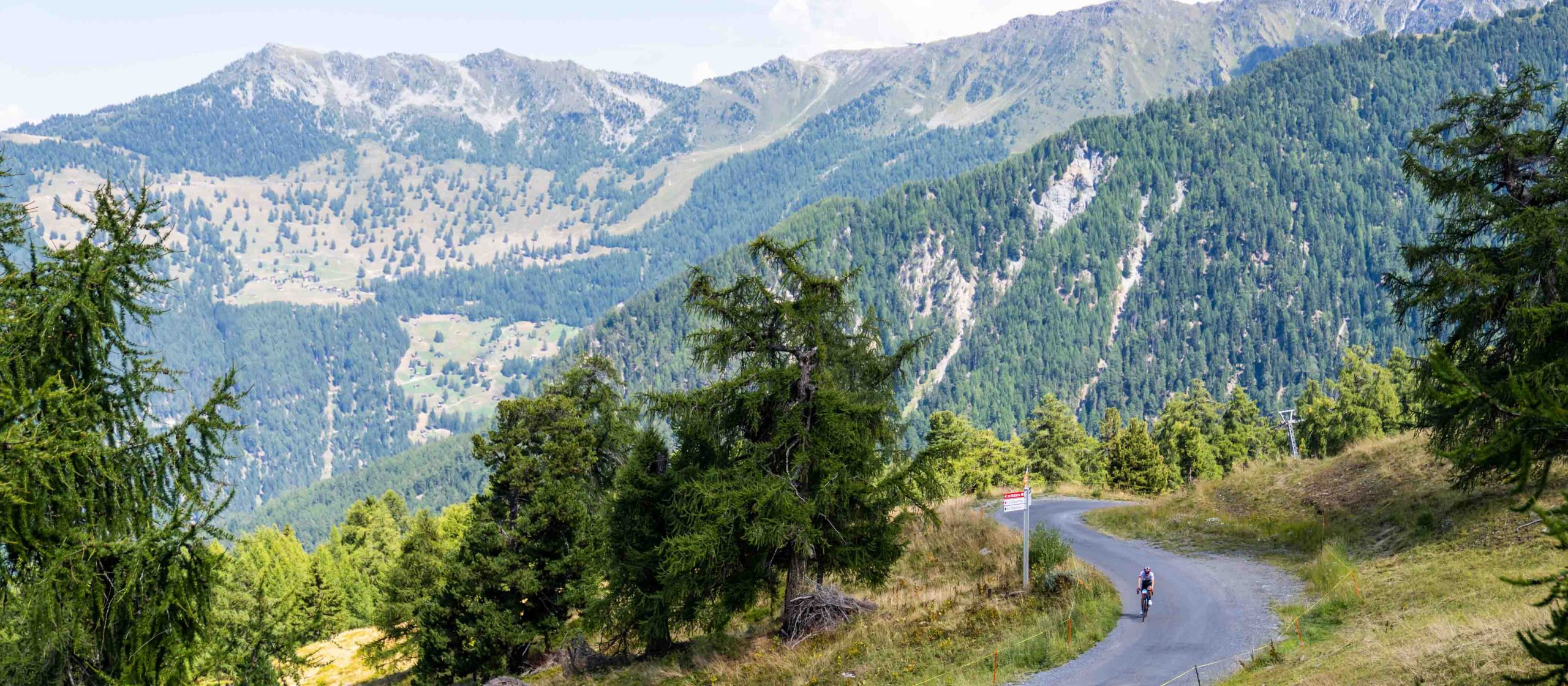

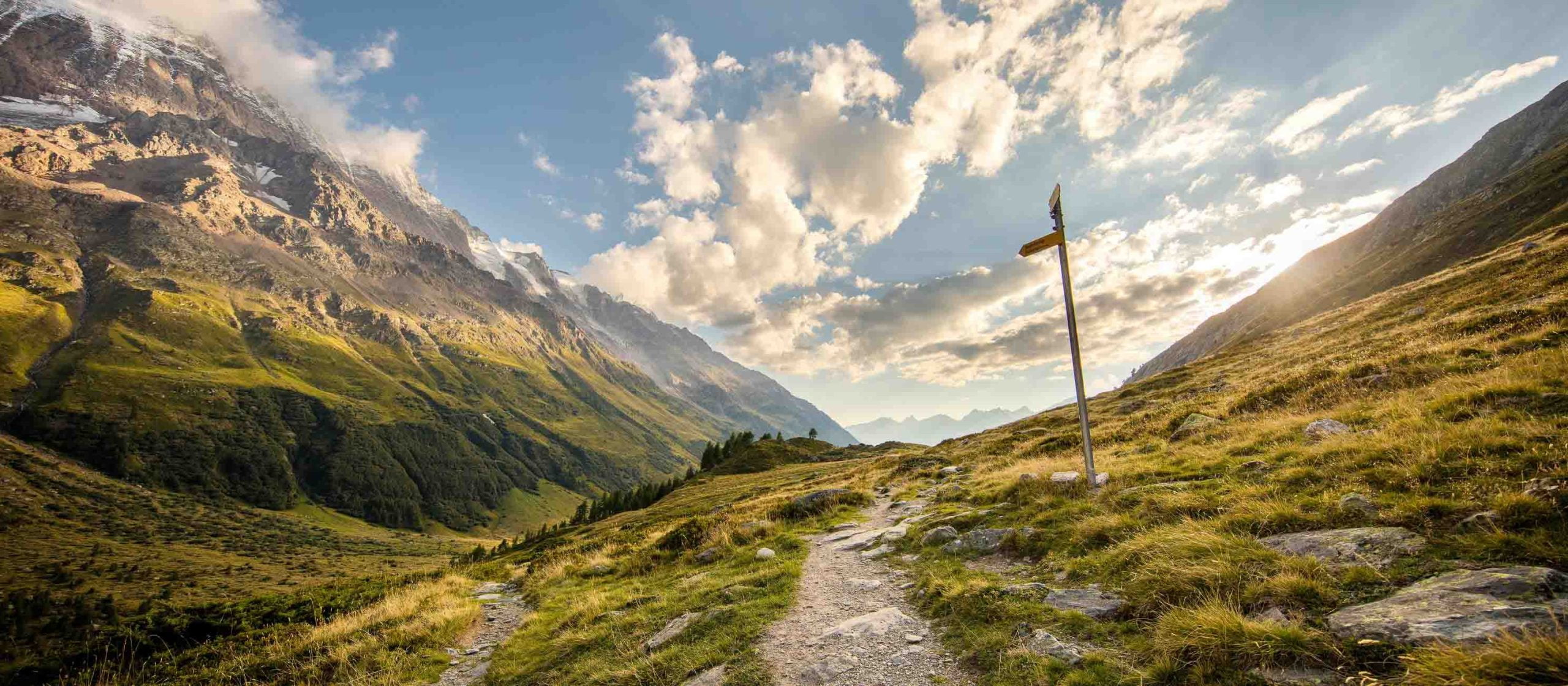

The Tour des Stations is a fantastic event with a great spirit, support from the local communities and excellent food/drink stations. We did the Mediofondo for the first time in 2020, and again for the fateful 2021 event. Be prepared for all weather!
I honestly feared for my life the last 5km in 2021 as the rain, thunder and lightning crashed around me. I made it to the top and huddled in the only restaurant up there along with a hundred or so others. We ensured the few emergency blankets were given to those most in need and bought hot drinks for shivering strangers in the early stages of hypothermia. We were rescued by a friend when they finally allowed cars up the road. An experience I don’t want to re-live!
A weather change had been forecast but was predicted much later and from memory, just rain. No-one could have foreseen the crazy storm. The organisers stopped the event shortly after I arrived as it was just too dangerous. Communication wasn’t the greatest for all of us huddled up top but we were safe and they had others still on the roads to worry about.
Overall, I would recommend TDS but on the condition that you come prepared for the possible worst (or pull out). Note that it was a heatwave the year before with 32°C and perfect sunshine all day. Luck of the draw!
Thanks for sharing your experiences, it’s great to hear firsthand about the spirit, support and excellent food stations! Weather is certainly unpredictable in the mountains and your words highlight how important it is to be prepared. Thank you!